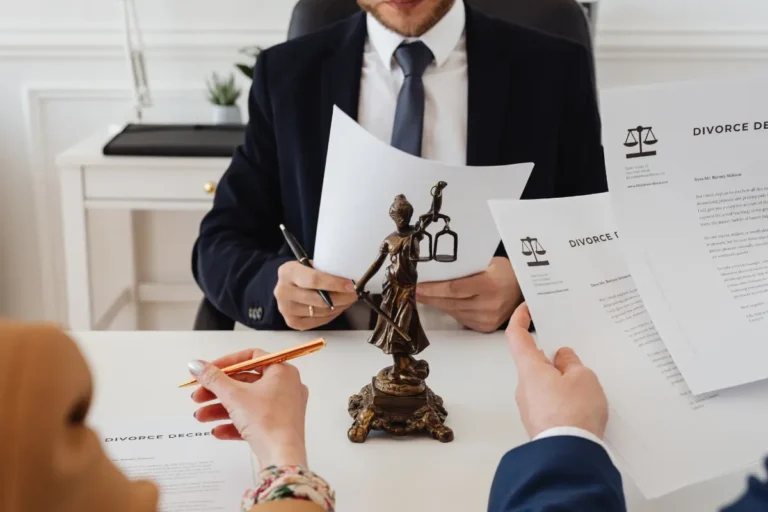If you want to live with your spouse or partner in the UK, you may need to apply for a spouse or partner visa. This visa allows you to join or remain with your loved one in the UK legally. However, the process can be quite confusing and sometimes stressful. This article will guide you step-by-step on how to apply for a UK spouse or partner visa in simple language, so you know exactly what to do and what to expect.
What Is a UK Spouse or Partner Visa?
A spouse or partner visa is a type of visa that lets you live and work in the UK if you are married to, in a civil partnership with, or living with someone who is a British citizen or settled in the UK. It also covers fiancées or proposed civil partners who intend to marry or form a civil partnership after arriving in the UK.
You can apply for this visa from outside the UK (called “leave to enter”) or if you are already in the UK, you can apply to extend your stay (called “leave to remain”). After spending some years in the UK on this visa, you may also be able to apply for indefinite leave to remain, which means you can live in the UK permanently.
Who Can Apply for a Spouse or Partner Visa?
You can apply if:
- Your spouse or partner is a British citizen or has settled status in the UK (such as indefinite leave to remain or permanent residence).
- You are 18 years old or older.
- You have a genuine and subsisting relationship.
- You both intend to live together permanently in the UK.
Types of Relationships Covered
The visa applies to different relationships, including:
- Married couples
- Civil partners
- Unmarried partners (living together in a relationship similar to marriage for at least two years)
- Fiancées or proposed civil partners (those planning to marry or form a civil partnership within 6 months of arrival)
What are the Steps to Apply for a UK Spouse or Partner Visa
Step 1: Understand the Requirements
Before you start your application, it is important to understand the key requirements you must meet. These are divided into two main groups:
1. Suitability Requirements
These relate to your background and character. The Home Office will check if you have any serious criminal convictions or immigration history that might make you unsuitable to come to or stay in the UK.
2. Eligibility Requirements
These focus on your relationship, your finances, your accommodation, and your English language skills. You must prove that:
- Your relationship is genuine and ongoing.
- You and your partner meet the minimum income or financial requirement.
- You have adequate accommodation for you and your family.
- You meet the English language requirements.
Step 2: Gather the Required Documents
Your application will need to be supported by documents proving you meet the requirements. These documents are very important, so make sure you have everything in order before submitting your application.
Key documents usually include:
- Your valid passport or travel document.
- Proof of your relationship, such as marriage certificate, civil partnership certificate, or evidence of living together for unmarried partners (e.g., joint bank statements, utility bills).
- Evidence of your partner’s British citizenship or settled status (passport or residence card).
- Proof of meeting the financial requirement, such as payslips, bank statements, or evidence of self-employment.
- Evidence of suitable accommodation, such as a tenancy agreement or mortgage statement.
- Proof that you meet the English language requirement (an approved English test certificate or passport from an English-speaking country).
- Tuberculosis test results (if you are from a country where TB screening is required).
Step 3: Check the Financial Requirement
You and your partner must show that your sponsor in the UK earns a minimum income to support you without relying on public funds. The usual income threshold is £18,600 per year. This amount increases if you have children.
You can meet the financial requirement through:
- Salary from employment or self-employment
- Pension income
- Certain benefits or savings
If you do not meet this threshold, there may be alternative routes, such as showing savings above a certain amount or relying on exceptional circumstances, but these can be complicated and should be carefully considered.
Step 4: Meet the English Language Requirement
You must prove you can speak and understand English to a basic level. You can do this by:
- Passing an approved English language test at CEFR level A1 (for entry clearance or leave to remain).
- Having a passport from a majority English-speaking country.
- Having a degree taught or researched in English (with a UK NARIC certificate).
- Some people are exempt, such as those over 65 or with certain disabilities.
For extensions of leave to remain, you will need to show improvement to at least level A2, and for indefinite leave to remain, level B1 plus passing the Life in the UK test.
Step 5: Complete the Application Form Online
You must apply online using the official UK government website. Make sure you select the correct visa category: “Family of a settled person — spouse or partner.”
Be careful to fill in all details accurately and honestly. Mistakes or omissions can lead to delays or refusals.
Step 6: Pay the Fees
The visa application fee varies depending on whether you apply from outside or inside the UK. You will also need to pay the Immigration Health Surcharge (IHS), which gives you access to the UK’s National Health Service (NHS).
Example fees:
- Visa application fee (approximate): £1,523 outside the UK, £1,033 inside the UK (subject to change)
- Immigration Health Surcharge: £1,035 per year
The IHS is usually paid upfront for the whole visa period.
Step 7: Book and Attend Your Biometric Appointment
After submitting your application, you will be asked to book an appointment to provide your biometric information (fingerprints and photograph). This is done at a visa application centre in your country or locally if you are applying from inside the UK.
Make sure to attend on time and bring your appointment confirmation and identification documents.
Step 8: Submit Your Supporting Documents
You will need to send or upload your supporting documents as part of your application. Some documents may need to be originals, while others can be copies.
Always check the most recent guidance on document requirements and make sure you include everything requested to avoid delays.
Step 9: Wait for a Decision
The Home Office will consider your application and supporting documents. Processing times vary, but generally:
- Applications made from outside the UK take around 12 weeks.
- In-country applications can take around 8 weeks.
During this time, the Home Office may contact you for further information or invite you for an interview if necessary.
Step 10: What Happens After Your Visa Is Granted?
If your application is successful:
- You will receive a visa allowing you to enter or stay in the UK for 30 or 33 months (about 2.5 to 3 years).
- You can work and study in the UK.
- You cannot claim public funds (benefits) during this time unless given special permission.
- Near the end of your visa, you can apply to extend your stay or apply for indefinite leave to remain if you have been in the UK for 5 years.
Tips to Improve Your Chances of Success
- Ensure your relationship is well documented. Submit photos, messages, joint bills, and travel evidence showing you have a genuine relationship.
- Meet the financial requirement carefully. Double-check your income or savings and provide clear proof.
- Provide accurate, honest information. Do not hide or falsify details, as this can lead to refusal.
- Prepare your documents in advance. Missing documents are a common reason for refusal.
- Seek professional advice if needed. Immigration rules can be complex, so getting help from a qualified immigration adviser or lawyer can be a good investment.
What If Your Application Is Refused?
If your application is refused, you will be informed in writing why. You may have the right to:
- Appeal the decision (depending on the reason for refusal).
- Apply for an administrative review.
- Submit a new application after correcting the issues.
Refusals often happen due to insufficient evidence, incorrect forms, or failure to meet financial or English requirements.
Special Situations
Visitors Applying Inside the UK
If you are in the UK on a visitor visa, you usually cannot switch to a spouse or partner visa without leaving the UK first. Doing so may be considered overstaying, which is a criminal offence and harms future immigration applications.
Exceptional Circumstances
If you or your partner have special situations, such as risk of persecution or serious hardship, there might be different rules or longer qualifying periods. These cases are more complex and usually need legal advice.
Summary Checklist: What You Need for Your Application
- Correct and up-to-date application form completed online
- Application fee and Immigration Health Surcharge paid
- Valid passport or travel document
- Proof of genuine and subsisting relationship
- Evidence of sponsor’s British citizenship or settled status
- Proof of meeting financial requirement
- Proof of suitable accommodation
- English language test certificate or equivalent evidence
- Tuberculosis test certificate (if required)
- Biometrics (fingerprints and photo) submitted
Final Thoughts
Applying for a UK spouse or partner visa is a big step, and it can feel overwhelming. But by understanding the process, gathering the right documents, and meeting the requirements carefully, you can improve your chances of success. Remember, honesty and thoroughness are key.
If you feel unsure at any stage, don’t hesitate to get help from a professional immigration adviser who knows the rules and can guide you smoothly through your application.
Good luck with your application! Soon, you could be starting a new chapter living together in the UK.




